Hōkūle‘a Returns to Taputapuatea for Ancient Voyaging Ritual
Traditional Polynesian voyaging canoes Hōkūleʻa and Hikianalia were welcomed by local dignitaries, spiritual elders and community members at Taputapuatea. The marae, or the focal meeting ground, is located on the southeastern coast of Raʻiātea in French Polynesia.
The purpose of the stop was to honor the ancient tradition of Hawai‘i’s Polynesian ancestors who would go to Taputapuatea, the spiritual center for voyagers of the Pacific, to ceremonially launch and close their voyages of discovery. After sailing about 100 miles from Papeete, Tahiti, the canoes arrived at Taputapuatea yesterday morning following the historic protocol of entering via the sacred pass of Teava Moa.
The ceremony began with pwo navigator Nainoa Thompson and captain Billy Richards returning two sacred stones to the marae that were given to the crew when the canoes last visited Taputapuatea in 2014 to launch the Mālama Honua Worldwide Voyage. The return of the two stones signified that the Hōkūleʻa and Hikianalia crews fulfilled their responsibility to sail around the world and deepened the connection between Hawai‘i and its navigational roots in Taputapuatea.
“These stones carried the spirits of all of our ancestors and the direct descendants of all of our families as we sailed around the world,” said Thompson. “Today we brought the stones home to Taputapuatea and were granted permission from by our ancestral family to return home. It’s the last permission based on the fulfillment of many promises we made,” he added.
In addition to the spiritual elders of Taputapuatea, the crew was greeted by French Polynesia president Edouard Fritch, the Taputapuatea mayor Thomas Moutame, and the country’s minister of culture Heremoana Maamaatuaiahutapu. The day-long ceremony featured the ancient rituals conducted to ceremonially complete a voyage, traditional chants and dance by the Taputapuatea community and students from Kamehameha Schools and Miloli‘i Charter School.
In honor of this ceremonial milestone, crewmembers from Hōkūleʻa’s first voyage to French Polynesia in 1976 joined this leg from Tahiti to Ra’iātea, including Gordon Pi‘ianāi‘a, Billy Richards, Snake Ah Hee, Kainoa Lee and John Kruse. Zane Aikau, nephew of 1978 crewmember Eddie Aikau, also participated on the leg on behalf of the Aikau family and 1976 crewmember Buffalo Keaulana who was unable to join the sail.
Special guests who also participated on the overnight sail included Hawaiian Airlines CEO Mark Dunkerley, University of Hawai‘i president David Lassner, and Hawai‘i State Department of Education superintendent Kathryn Matayoshi.
Once considered the religious and cultural center of Polynesia, Taputapuatea is the location of an ancient marae that was once considered the central temple and religious center of Eastern Polynesia.
Established around 1000 AD, the marae was a place of learning where priests and navigators from all over the Pacific would gather to offer sacrifices to the gods and share their knowledge of the genealogical origins of the universe, and of deep ocean navigation.
Most significantly, a truce known as the Fa‘atau Aroha was established with the surrounding islands to form an alliance that lasted for many years and perpetuated the growth of voyaging and exploration leading to the discovery and colonization of all the islands of Eastern Polynesia, including Hawai‘i, Rapa Nui and Aotearoa (New Zealand). New marae were established on each of these islands with a rock being taken from Taputapuatea so that Ra’iātea served as a spiritual link. However, the Fa‘atau Aroha was broken due to a conflict between two leaders of the alliance that resulted to open warfare and an end to large-scale interisland voyaging.
The archaeological remains of Marae Taputapuatea were restored in 1994 and efforts to preserve the site continues. Association Na Papa E Va‘u Ra’iātea is working towards having Marae Taputapuatea designated as a UNESCO World Heritage site and continuing work to revive connections between communities of the Polynesian triangle and throughout the Pacific region.
Hōkūleʻa and Hikianalia are scheduled to depart Taputapuatea today and will return to Papeete, Tahiti where the crews will prepare the canoes for the voyage back to Hawai‘i. The canoes will depart French Polynesia in mid-May and will arrive at Magic Island on Oahu for a homecoming celebration on Saturday, June 17.
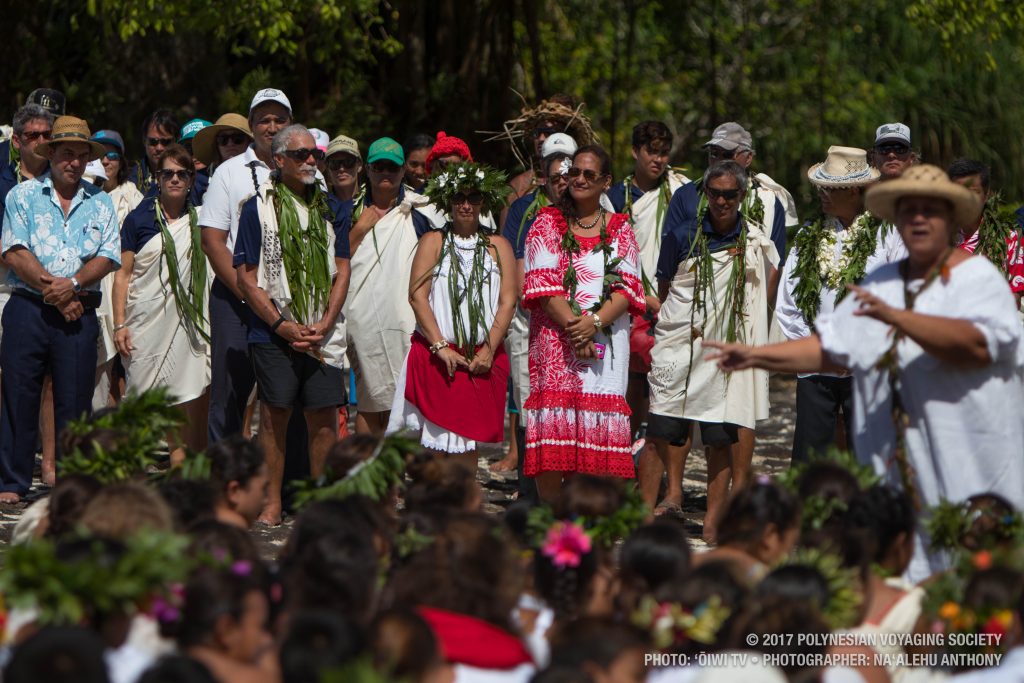
Hōkūleʻa voyage to Taputapuatea. PC: Nāʻālehu Anthony/Polynesian Voyaging Society/ʻŌiwi TV.
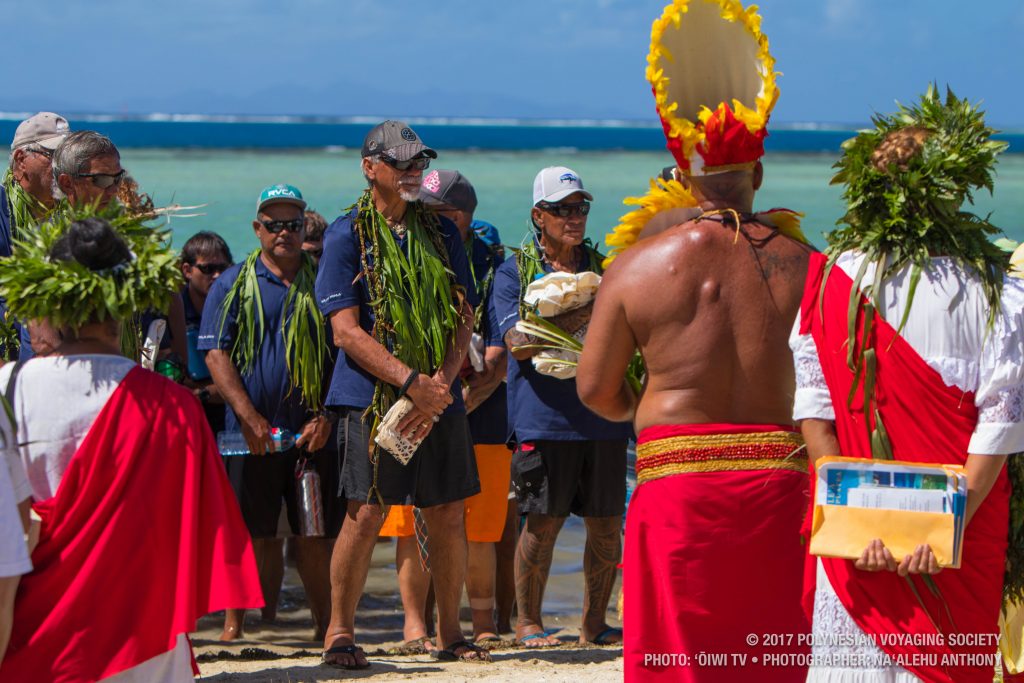
Hōkūleʻa voyage to Taputapuatea. PC: Nāʻālehu Anthony/Polynesian Voyaging Society/ʻŌiwi TV.
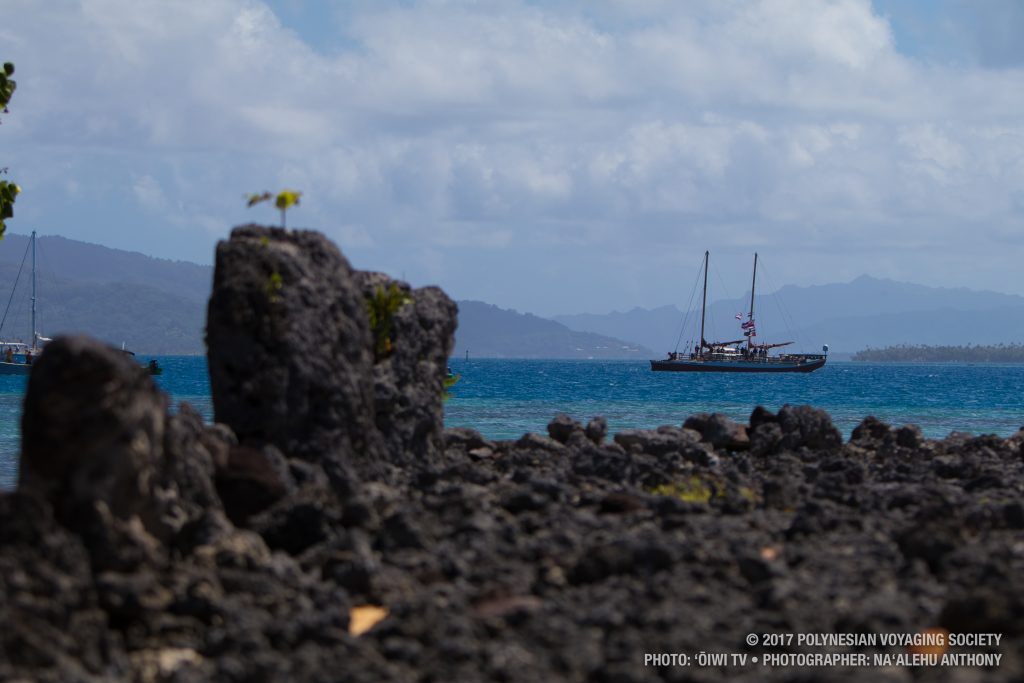
Hōkūleʻa voyage to Taputapuatea. PC: Nāʻālehu Anthony/Polynesian Voyaging Society/ʻŌiwi TV.
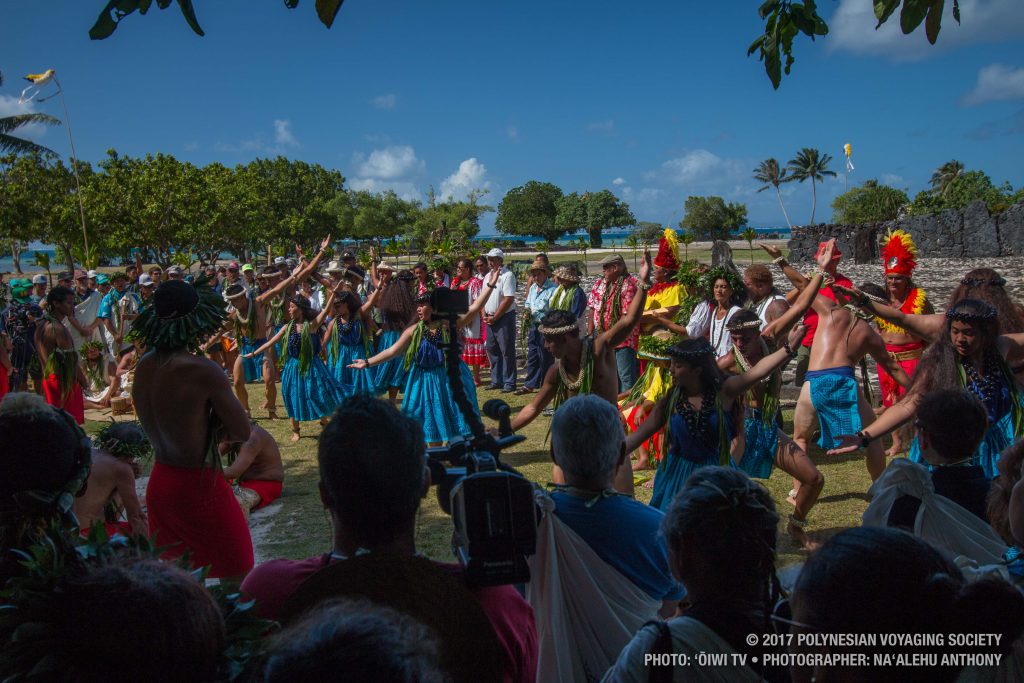
Hōkūleʻa voyage to Taputapuatea. PC: Nāʻālehu Anthony/Polynesian Voyaging Society/ʻŌiwi TV.
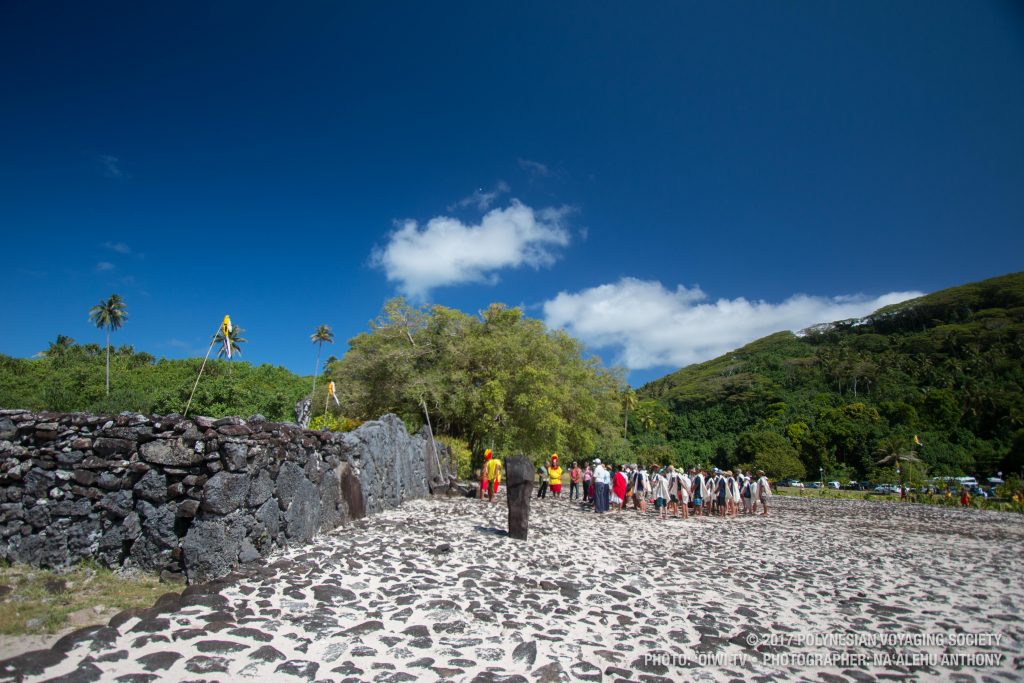
Hōkūleʻa voyage to Taputapuatea. PC: Nāʻālehu Anthony/Polynesian Voyaging Society/ʻŌiwi TV.
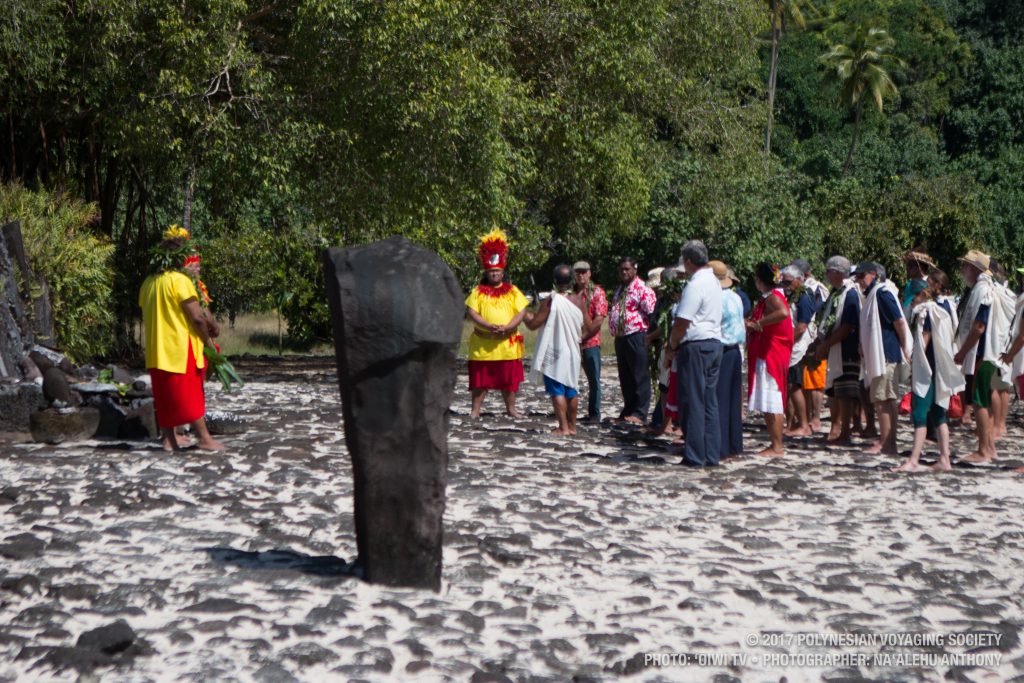
Hōkūleʻa voyage to Taputapuatea. PC: Nāʻālehu Anthony/Polynesian Voyaging Society/ʻŌiwi TV.
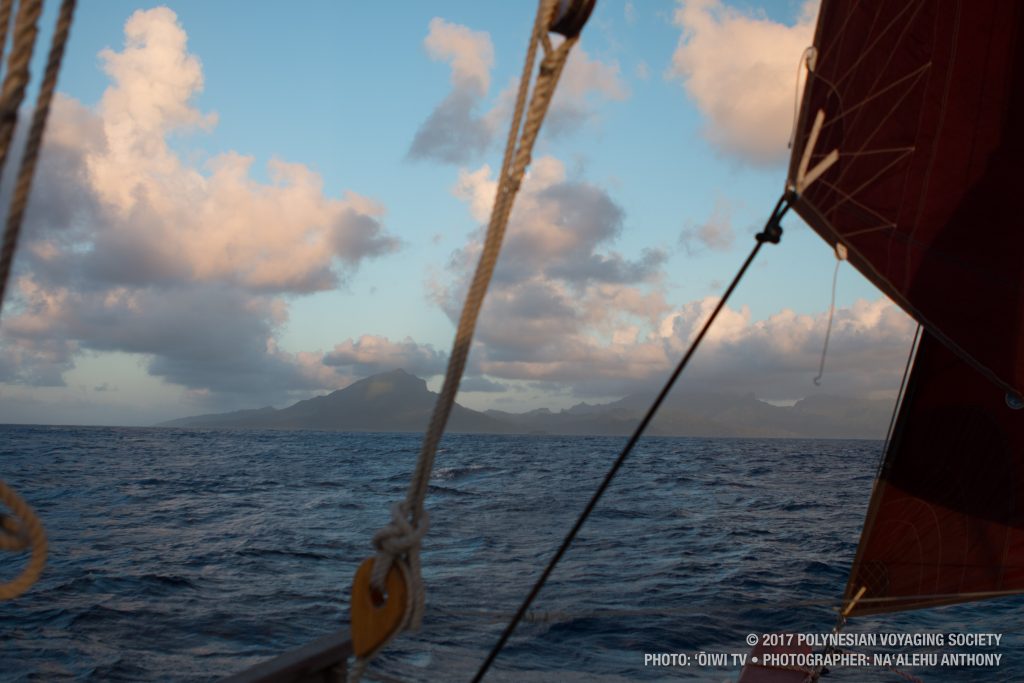
Hōkūleʻa voyage to Taputapuatea. PC: Nāʻālehu Anthony/Polynesian Voyaging Society/ʻŌiwi TV.












